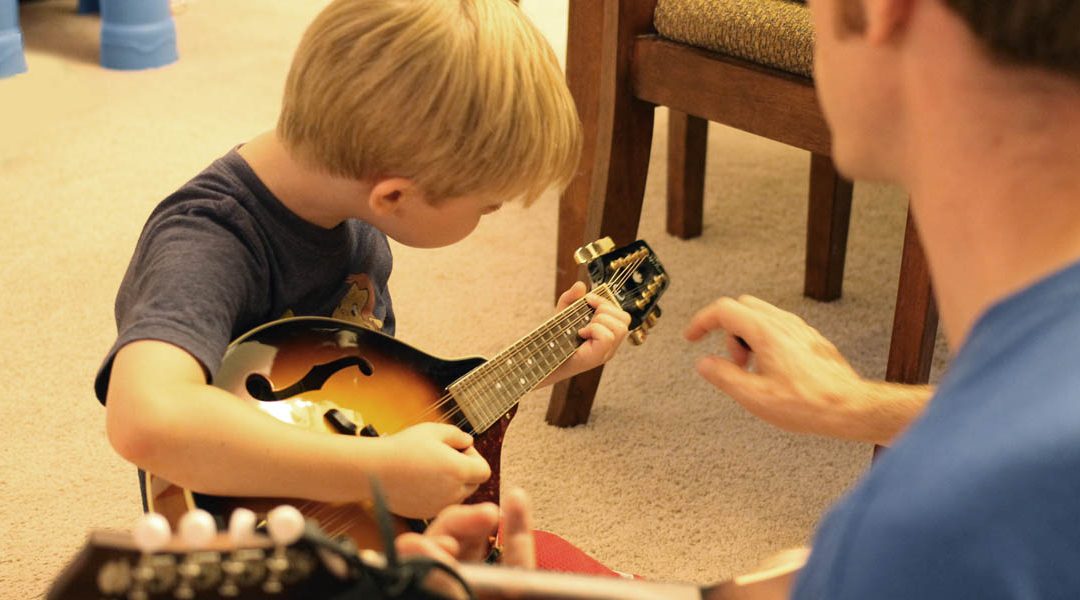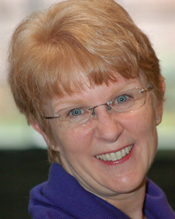Spring 2021/Evelyn Bickley
Rock-a-bye, baby, in the tree top…
Row, row, row your boat, gently down the stream…
Jingle bells, jingle bells…
Away in a manger, no crib for a bed…
The songs that you learned as a child and that may have immediately come back to you just now were the beginning of your musical education. Even if you don’t consider yourself musical because you long ago quit playing your trumpet, or you sing only in the shower, the basics of music—melody, harmony, and rhythm—have stayed with you.
Many homeschool teachers and parents will feel strained even thinking about adding music education to the already lengthy list that includes just getting the three Rs accomplished! It is also not in everyone’s budget or timeline to add a couple of years with a music teacher for their children to learn to read music and play an instrument. So what are some ways to incorporate music into your family and school life? And just why is music important, anyway?
Let’s start with the second question first: why include music? According to an article entitled “The Benefits of Studying Music” from Florida National University, music can relieve stress and improve brain function, focus, and even physical performance. The article cites a study that showed that listening to music can lower blood pressure and heart rate as well as other signs of anxiety—great especially for those with test or performance anxiety. Basketball players who listened to upbeat music prior to games were significantly more likely to perform well especially in high-pressure situations like free throws.
Dr. Anita Collins, an internationally known researcher in the field of brain development and music, has worked with neuroscientists around the world. She reports that the scientists studied brains by way of MRI and PET scans while having people perform tasks such as reading or doing math problems. The researchers watched which parts of the brain lit up with each activity. When subjects listened to music, nearly every part of the brain lit up simultaneously! It was also found that music strengthens the communication pathways between the two halves of the brain and allows for far greater problem-solving ability, thinking, and higher memory pathways. They found that music and language processing—including reading—are closely connected in the brain. Overall, involvement with music generally raises cognitive capacities.
Dr. Collins urges musical exposure and instruction before the age of seven for maximum benefit. Incorporating music into daily life with young children can be as simple as singing songs throughout the day and having a music-rich auditory environment by playing music. I especially did this while in the car with my children, even tapping out the beat of the songs on their car seats to help them know about rhythm. Let the little ones dance to fun music, which also has the benefit of working out some of the wiggles! At first, it may just look like jumping around, but you can gently lead them into more organized or even interpretive movement in response to the feeling of the music.
What do you do, though, if your children are not under seven, or if you aren’t musical yourself? What are easy ways to add music without adding another whole curriculum to teach?
One of my favorite teaching methods is to combine subjects into minor unit studies. For example, if we are studying the Civil War, we might do a little history textbook reading, but we mostly read biographies or other pieces of historical literature, visit a battlefield or re-enactment, and make some food typical of what a soldier might have had. Adding music here is a natural: listening to “The Battle Hymn of the Republic,” or “Dixie,” or even “Eating Goober Peas” is a simple way to enrich the history study.
Music is mathematical. The meter signature tells how many beats per measure and how many beats each note gets. Studying written music helps with counting, addition, and even fractions. Learning to identify patterns in music can also help students learn to identify patterns in math.
Music is scientific. Ever heard of sound waves? How Music Works from Lightnote (https://www.lightnote.co/) starts with the basic physics of sound.
Is a holiday coming up? Incorporate songs of the season while learning about and observing the reason for the day. Sharing a sing-along with your kids can create great family memories.
Musicinourhomeschool.com is a webpage run by a homeschooling mom of eight who is also a music teacher with twenty-five years of experience. She offers more than forty free Fifteen Minute Music Lessons, many tied to holidays, specific composers, or themes. Lessons are pretty complete with links to performances, ideas to discuss, copy work, and even related books to read!
Melody, harmony, and rhythm: add some music to your family’s life and reap a multitude of benefits.




